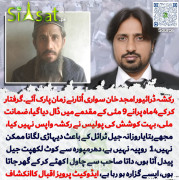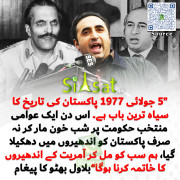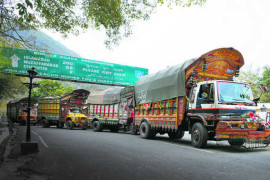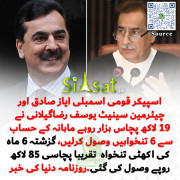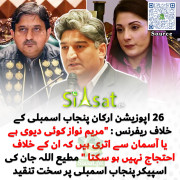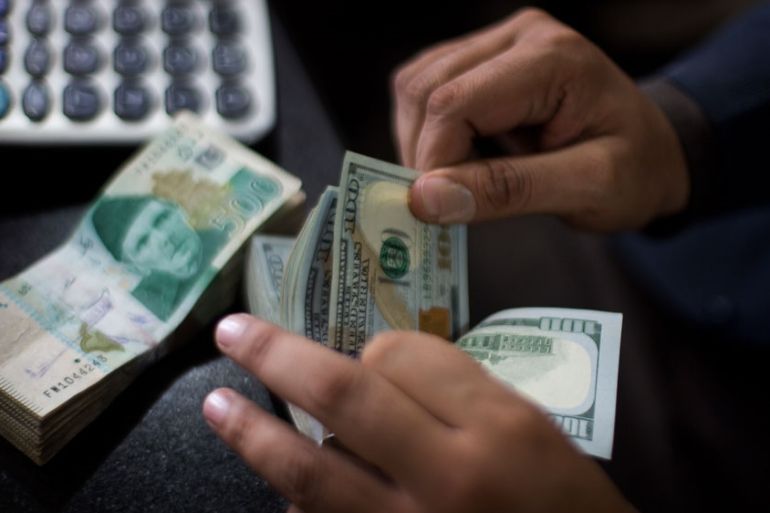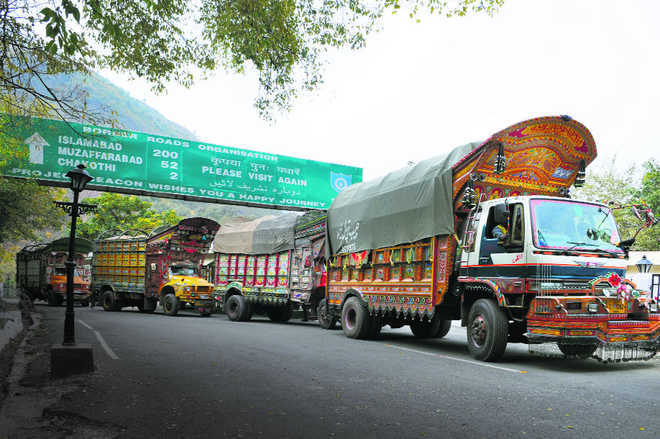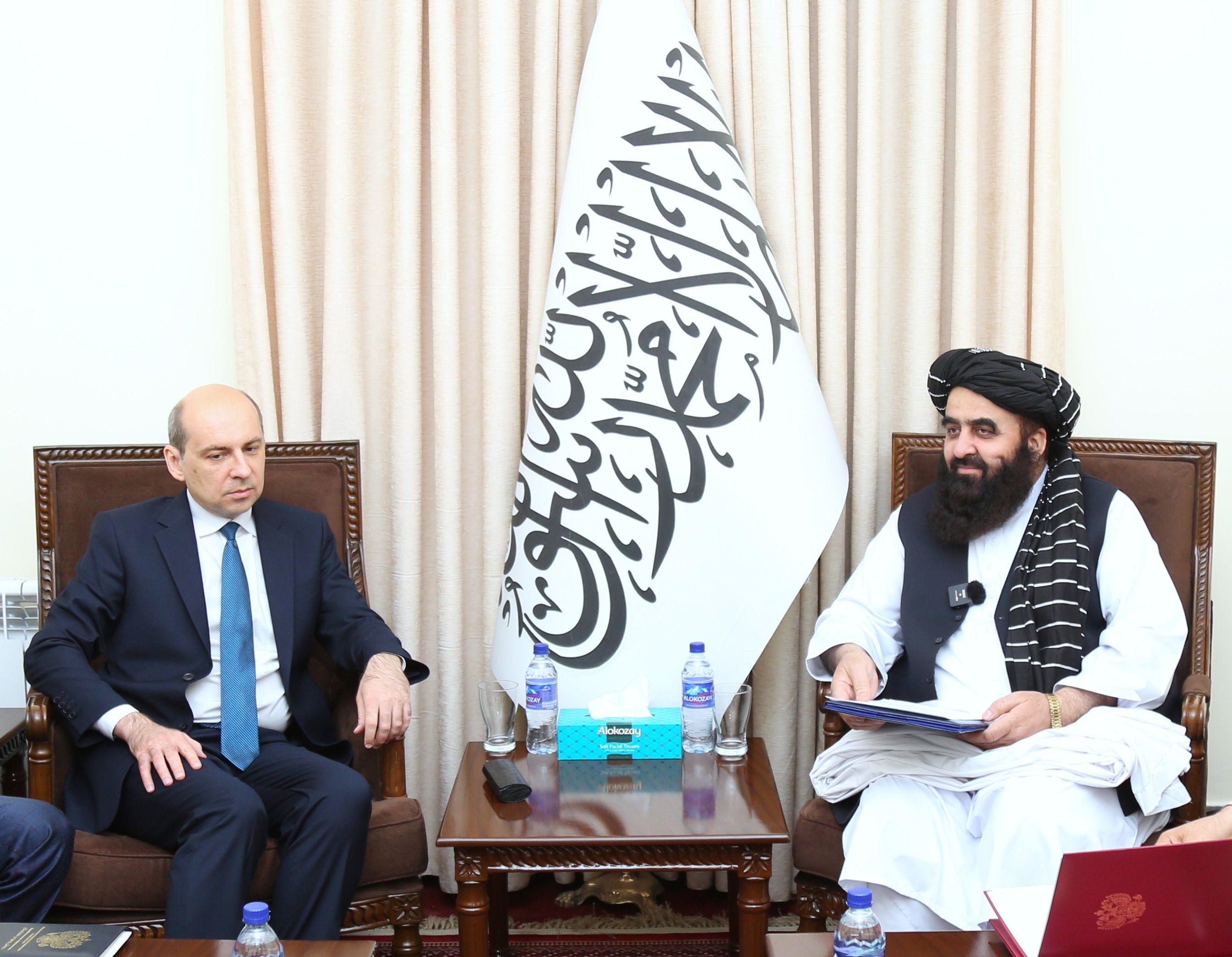canadian
Chief Minister (5k+ posts)
Looted billions back after dry-cleaning
November 9, 2011 — koolblue Mehtab Haider

ISLAMABAD: Who says the billions looted by our corrupt rulers are not coming back into the country? Ironically they are, but only after being cleansed and sanitised by being brought back through official legal avenues while a clueless State Bank looks on helplessly.
An investigation by The News revealed that a substantial portion of the foreign remittances of $23.8 billion, during the almost four-year rule of the PPP led govt, is actually a major source of re-routing of dirty money earned through corruption and tax evasion by the political mafia and its business associates. To cite one instance, while there have been no mentionable increases in salaries or the number of Pakistani ex-pats working in the UAE, there are instances where the remittances have surged three-fold from Abu Dhabi, a favourite fund parking choice of our dirty elite.
The foreign remittances stood at $6.4 billion in 2007-08 and went up to $7.6 billion in 2008-09. The remittances witnessed another jump and touched $8.6 in 2009-10 and surged to $11.2 billion in the last financial year ending on June 30, 2011. This rising trend continued in the first quarter (July-Sept) period of the current fiscal year as it stood at $3.297 billion during this period. The figures of the Bureau of Immigration showed that the number of employed workers in the Gulf region did not witness any unprecedented increase but the received remittances jumped up three times in the case of Abu Dhabi, Saudi Arabia, the European Union and maintained the same level from the USA despite the fact that the developed economies such as the USA and EU were facing an acute financial and debt crisis.
The economists describe this funds-movement phenomenon as money laundering, pure and simple, and the easiest method of turning black illegal wealth into legal white money. No questions asked, no taxes paid. And the method is one of the cheapest money laundering tools as well. The entire exercise of taking dirty funds out illegally and bringing them back clean and legal costs a mere 2 percent of the cost of the entire value of the involved sums.
As put by one economic crime investigator, “This is what we call the Dutch disease that needs to be investigated because if it evaporated it could cause us to plunge into a default on our external account.” This is not a baseless apprehension as proven in the wake of emerging realities. Workers’ remittances showed a declining trend by a massive 32% to $890 million in September 2011 compared to $1,310 million in August 2011.
“One should not see development on the remittances front for the first quarter as it is a worrisome indicator if closely reviewed by the economic managers. In terms of remittances, Pakistan can be compared with the Philippines as its growth is almost flat with authorities expecting a 4.5 percent jump keeping in view the economic outlook of major economies such as the USA, United Kingdom, European countries and the Gulf region. But there is a complete mismatch in the case of Pakistan as the country is witnessing a phenomenal increase by 25 percent without having any economic justifications,” a top officer of the government’s economic team told The News here on Saturday.
Former economic advisor to the government of Pakistan, Dr Ashfaque Hassan Khan who is currently serving as Dean NUST Business School (NBS) opined that there was a mysterious growth in remittances which was not consistent with the level of economic activities in countries from where the bulk of expatriate Pakistanis were sending their money. For example, he said, the US has been the single largest source of remittances and its economy is near to recession as millions of people have lost their jobs. He asked how Pakistanis are still maintaining the same level of remittances as had been the case during the good times in the USA.
He said that another major source of remittances was the European countries, which had been suffering a severe debt crisis for the last two years and economic growth there was almost flat. How one can justify that Pakistanis can afford to continue sending money despite experiencing a standstill economic growth in the EU countries, he asked.
Dr Ashfaque said that another major source is the Middle East and remittances from there witnessed a three-fold increase in recent years. Neither the wages nor the number of overseas employees increased in this period so there is no justification for the sudden jump, he said, arguing, “What is happening on remittances is an unknown phenomenon,” and lamented that so far no credible response had come from the SBP.– (http://koolblue.wordpress.com/)
November 9, 2011 — koolblue Mehtab Haider

ISLAMABAD: Who says the billions looted by our corrupt rulers are not coming back into the country? Ironically they are, but only after being cleansed and sanitised by being brought back through official legal avenues while a clueless State Bank looks on helplessly.
An investigation by The News revealed that a substantial portion of the foreign remittances of $23.8 billion, during the almost four-year rule of the PPP led govt, is actually a major source of re-routing of dirty money earned through corruption and tax evasion by the political mafia and its business associates. To cite one instance, while there have been no mentionable increases in salaries or the number of Pakistani ex-pats working in the UAE, there are instances where the remittances have surged three-fold from Abu Dhabi, a favourite fund parking choice of our dirty elite.
The foreign remittances stood at $6.4 billion in 2007-08 and went up to $7.6 billion in 2008-09. The remittances witnessed another jump and touched $8.6 in 2009-10 and surged to $11.2 billion in the last financial year ending on June 30, 2011. This rising trend continued in the first quarter (July-Sept) period of the current fiscal year as it stood at $3.297 billion during this period. The figures of the Bureau of Immigration showed that the number of employed workers in the Gulf region did not witness any unprecedented increase but the received remittances jumped up three times in the case of Abu Dhabi, Saudi Arabia, the European Union and maintained the same level from the USA despite the fact that the developed economies such as the USA and EU were facing an acute financial and debt crisis.
The economists describe this funds-movement phenomenon as money laundering, pure and simple, and the easiest method of turning black illegal wealth into legal white money. No questions asked, no taxes paid. And the method is one of the cheapest money laundering tools as well. The entire exercise of taking dirty funds out illegally and bringing them back clean and legal costs a mere 2 percent of the cost of the entire value of the involved sums.
As put by one economic crime investigator, “This is what we call the Dutch disease that needs to be investigated because if it evaporated it could cause us to plunge into a default on our external account.” This is not a baseless apprehension as proven in the wake of emerging realities. Workers’ remittances showed a declining trend by a massive 32% to $890 million in September 2011 compared to $1,310 million in August 2011.
“One should not see development on the remittances front for the first quarter as it is a worrisome indicator if closely reviewed by the economic managers. In terms of remittances, Pakistan can be compared with the Philippines as its growth is almost flat with authorities expecting a 4.5 percent jump keeping in view the economic outlook of major economies such as the USA, United Kingdom, European countries and the Gulf region. But there is a complete mismatch in the case of Pakistan as the country is witnessing a phenomenal increase by 25 percent without having any economic justifications,” a top officer of the government’s economic team told The News here on Saturday.
Former economic advisor to the government of Pakistan, Dr Ashfaque Hassan Khan who is currently serving as Dean NUST Business School (NBS) opined that there was a mysterious growth in remittances which was not consistent with the level of economic activities in countries from where the bulk of expatriate Pakistanis were sending their money. For example, he said, the US has been the single largest source of remittances and its economy is near to recession as millions of people have lost their jobs. He asked how Pakistanis are still maintaining the same level of remittances as had been the case during the good times in the USA.
He said that another major source of remittances was the European countries, which had been suffering a severe debt crisis for the last two years and economic growth there was almost flat. How one can justify that Pakistanis can afford to continue sending money despite experiencing a standstill economic growth in the EU countries, he asked.
Dr Ashfaque said that another major source is the Middle East and remittances from there witnessed a three-fold increase in recent years. Neither the wages nor the number of overseas employees increased in this period so there is no justification for the sudden jump, he said, arguing, “What is happening on remittances is an unknown phenomenon,” and lamented that so far no credible response had come from the SBP.– (http://koolblue.wordpress.com/)
Last edited by a moderator:


